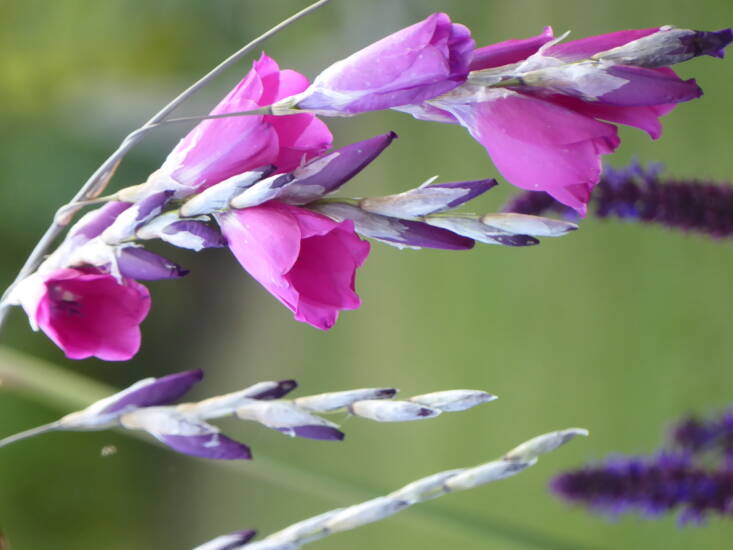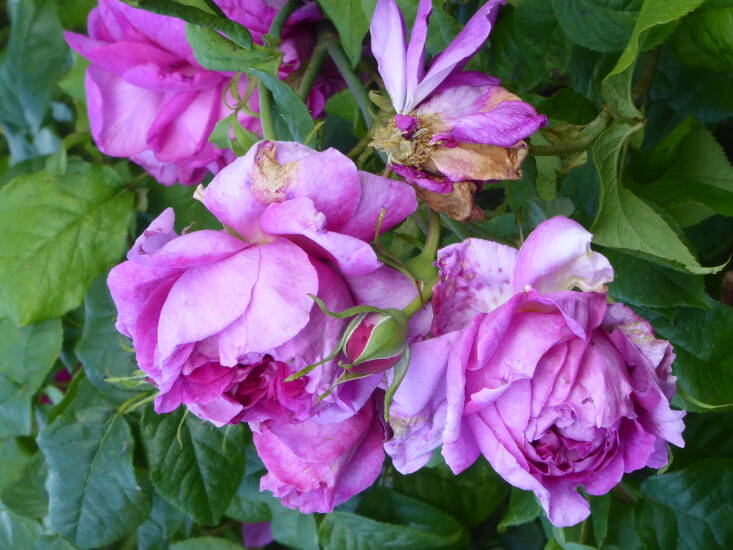If you want your borders or pots abundant with blooms for as long as possible, then there is one thing you cannot avoid: deadheading. Snipping off spent blooms is how you keep roses blooming right into winter (in my temperate patch on the east coast of England, roses in December are not uncommon). And it’s how you keep containers brimming with dahlias, cosmos, salvia, echinacea through late summer and autumn. Without deadheading, plants will naturally start to set seed and stop focusing on flower production; by lopping off flowers, you are tricking the plant into producing more blooms.
But it can be confusing to know what to deadhead and how. As a very general rule, you can cut almost any perennial to the ground, and it will regrow and flower but ideally you need to learn the regime for whatever plants you have in your garden.
Photography by Clare Coulson.

Does everything in your garden abide by the cut-and-come-again rule? No, but most perennials do. For perennials such as astrantia, delphiniums, foxgloves, scabious, alchemilla, and campanula cut flowering stems once the blooms and any flowering side shoots have gone over. And it’s wise to do this as soon as possible after flowering to get good regrowth and flowering in early autumn.

Some earlier perennials such as polemonium, oriental poppies, or geranium phaeum may not reflower, but you can remove flowering stems to tidy up the plant. For later flowering plants such as cosmos and dahlias, keep deadheading, cutting the stem down to a pair of shoots or leaves.

For woodier plants such as penstemons or hardy salvias, you can reduce the height of the plant, cutting flowering stems down by half and above a pair of leaves. The penstemon will keep flowering prolifically so long as you keep deadheading. For salvias I normally take a more drastic approach and cut the whole plant down to the base; in my experience this gives a better autumn display.

Sometimes cutting back is as much about having fresh foliage as flowers; plants that are prone to powdery mildew such as Knautia macedonica can be cut right back to the base to encourage entirely new foliage and flowers. Bear in mind that your plants will need some TLC after a dramatic cutback. If there’s no rain then make sure that you water them and avoid cutting back in very hot periods.

If you want self-seeders such as hesperis to seed themselves, then you’ll need to leave some of these stems standing. And don’t deadhead plants that produce beautiful and structural seedpods such as Phlomis russeliana and Baptisia australis.

For any repeat flowering rose, you need to deadhead flowers that have gone over. If there are clusters of blooms, you can snip out the spent ones as the petals drop. Once a whole stem has gone over, cut the stem down to just above a set of five leaves. You can also do a more radical version of this and take the whole plant down lower to encourage fresh foliage and flowers. At some point in the autumn, if you want hips for the winter, you need to stop cutting back and allow the flowers to naturally transform into hips.

For more on deadheading, see:
- Gardening 101: How to Deadhead Flowers
- Gardening 101: How to Prune Roses
- Ask the Expert: 7 Tips to Grow Cut Flowers in a Tiny Garden, from Floret Farm









Have a Question or Comment About This Post?
Join the conversation